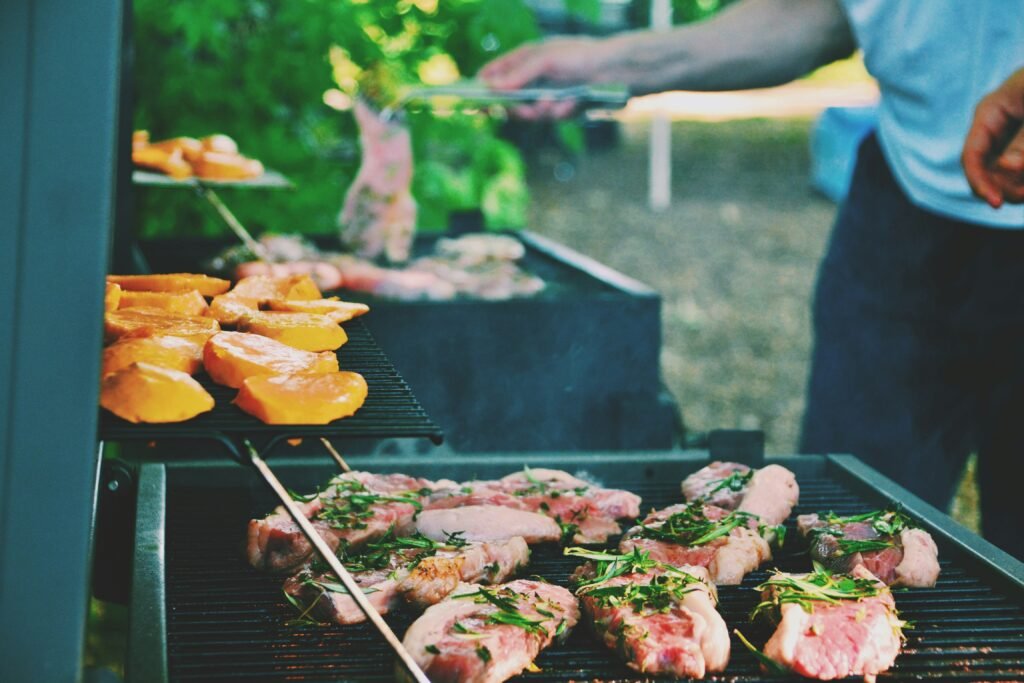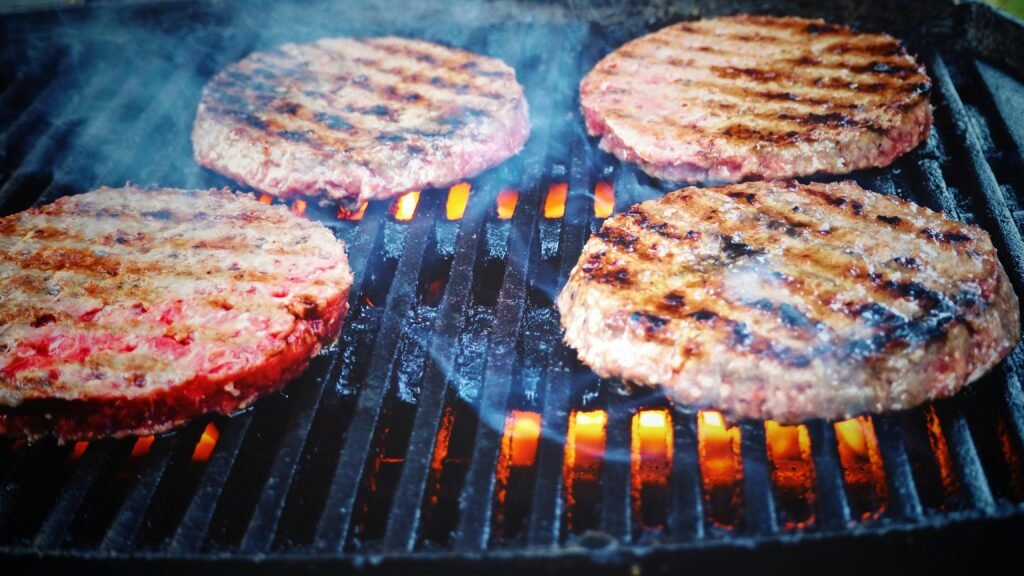Have you ever found yourself overwhelmed by the mouth-watering aroma of smoked BBQ, wishing you could recreate that magic in your own backyard? We’ve all been there, standing near the smoky haze, admiring the pitmasters who transform ordinary cuts of meat into tender, flavor-packed masterpieces. Imagine the satisfaction of biting into something you’ve skillfully smoked to perfection. Let’s journey together through the wonderful world of smoked BBQ, sharing insights and techniques that will turn us into seasoned pros.

This image is property of images.unsplash.com.
Understanding Smoked BBQ: A Flavorful Exploration
Before we head into the recipe, it’s essential to understand what makes smoked BBQ so delicious. The technique involves cooking meat slowly over indirect heat while exposing it to smoke from burning wood. This process not only tenderizes the meat but infuses it with deep, smoky flavors.
The Basics of BBQ Smoking
Smoke isn’t just smoke—it’s flavor in its most tempting form. The type of wood, the temperature, and the time all play critical roles in determining the final taste of the BBQ. Traditionally, wood chips such as hickory, mesquite, apple, and cherry are used. We’ll explore these options, looking into their unique characteristics and what they bring to the table.
The Importance of Temperature Control
Barbecuing is more of an art form than a precise science. We might find ourselves obsessing over temperature gauges. Why? Because steady temperature control is vital for ensuring that the meat cooks evenly and absorbs just the right amount of smokiness. We’ll delve into setting up a balanced heat source and maintaining an optimal temperature range.
Choosing the Right Equipment
You can’t talk about smoking BBQ without mentioning the gear. Let’s explore the different types of smokers available and how to select the one that suits both our lifestyle and BBQ aspirations.
Types of Smokers
Smokers come in a variety of shapes, sizes, and fuel types. Here’s a quick look:
| Type of Smoker | Pros | Cons |
|---|---|---|
| Charcoal Smoker | Gives authentic smoky flavor | Requires constant monitoring |
| Electric Smoker | Easy to use | Limited smoke flavor |
| Pellet Smoker | Consistent temperature control | Expensive and requires electricity |
| Gas Smoker | Convenient and easy to fire up | Less intense smoke flavor |
| Offset Smoker | Great for traditional smoking | Large and space-consuming |
We’ll consider our available space, budget, and how much we care about flavor complexity when deciding.
Essential Tools and Accessories
Alongside a good smoker, some accessories are non-negotiable. Let’s talk about meat thermometers, wood chips, and even the humble spray bottle which we’ll use for misting to keep the meat moist during the smoking process.
The Perfect Cut: Choosing Your Meat
Meat selection can make or break our BBQ experience. Here’s how we can choose the best options for smoking and what to ask our butcher.
Popular Meats for Smoking
- Beef Brisket: Known for its rich flavor, it’s a favorite among BBQ enthusiasts. Best smoked for long durations due to its tougher nature.
- Pork Ribs: Who doesn’t love a good rack of ribs? They’re quicker to smoke compared to larger cuts.
- Pork Shoulder (Boston Butt): Perfect for pulled pork, it’s forgiving and absorbs flavors well.
- Chicken: Quick to smoke and takes on flavors easily.
- Fish: Less common but incredibly delicious, especially types like salmon or trout.
Each type of meat has its own cooking times and ideal smoking techniques, which we’ll discuss further.
Prepping the Meat
Before the smoking begins, there’s a world of prep work required. We’ll examine techniques like brining, dry rubbing, and marinating, exploring how each method amplifies the smoky goodness.
Mastering the Art of Smoking
Let’s get into the heart of the matter: the actual smoking process. Here, we’ll break it down step-by-step, from setting up our smoker to finally tasting our efforts.
Setting Up the Smoker
Whether we’re battling a charcoal chimney or pressing a button on an electric smoker, there’s an initial setup that involves preheating and seasoning. We’ll walk through each step, ensuring we have the right environment for our meat to thrive.
Smoking Methods: Low and Slow
Patience is our best friend. Smoking is a slow process, allowing the flavors to really penetrate the meat. We’ll go over the key elements like estimated cooking times, when to add smoke, and how to monitor and adjust the temperature as needed.
Achieving the Perfect Smoke
The secret to great smoked BBQ lies in striking the right balance between meat, time, and smoke. We’ll discuss how to achieve this and troubleshoot common smoking mishaps like over-smoking or drying out the meat.

This image is property of images.unsplash.com.
The Recipe: Smoked BBQ Delight
Now, for the moment we’ve all been waiting for! Let’s bring together everything we’ve discussed into a simple yet delicious smoked BBQ recipe. We’ll use a classic choice: smoked pork shoulder.
Ingredients
Grab the following essentials for our smoked BBQ endeavor:
- 1 pork shoulder (about 8-10 pounds)
- 1/4 cup kosher salt
- 1/4 cup sugar
- 2 cups apple cider
- 1/2 cup BBQ rub (our choice)
- Wood chips of our choice (apple or hickory recommended)
Preparing the Pork Shoulder
- Brine the Meat: Combine kosher salt, sugar, and apple cider. Submerge the pork shoulder in the mixture and allow it to rest overnight in the refrigerator. This step ensures moisture retention during smoking.
- Apply the Rub: Remove the pork from the brine, pat dry, and generously coat with our chosen BBQ rub. Let it sit at room temperature while the smoker heats up.
Smoking Instructions
- Preheat & Load the Smoker: We’ll preheat to around 225°F (107°C). Depending on our smoker type, get those wood chips smoking.
- Begin the Smoke: Place the pork shoulder in the smoker, fat side up. Close the lid and let the magic happen.
- Managing Time and Temperature: Plan for roughly 1.5-2 hours per pound of meat. A trusty meat thermometer helps us keep tabs on the internal temperature. Aim for about 195-205°F (90-96°C) for tender, pull-apart pork.
- Foil Wrap (Optional): To retain moisture, when the internal temp hits around 160°F (71°C), we might choose to wrap the meat in foil and return it to the smoker.
- The Rest Period: Once smoked to perfection, let the pork rest for at least an hour. Trust us, the wait is worth the reward.
Serving Suggestions
Pull apart the pork with forks or gloved hands, and serve with classic accompaniments like coleslaw, pickles, and our favorite BBQ sauce. How about a sturdy bun to build a memorable sandwich? The options are limitless.
Exploring Flavor Variations
While certain flavor profiles are timeless, the beauty of smoked BBQ is in its adaptability. We’ll discuss how we can tweak rub ingredients, experiment with different woods, or introduce new marinades to bring our unique flair to the table.
Expanding Our Palate
Consider spices like cumin, coriander, or even coffee grounds for a bolder rub. Or, switch the wood chips between lighter, fruitier notes of cherry or the robustness of mesquite.

This image is property of images.unsplash.com.
Tips from the Pit Masters
We could all use some insider tips, right? Drawing from seasoned pitmasters, we’ll provide tips that can make a significant difference in our smoking adventure.
Dos and Don’ts of Smoking
Casting an eye over practical advice, from the importance of resting meat to how often we should sneak a peek at our masterpiece. Spoiler: less is more when it comes to opening the lid.
Common Smoking Mistakes
Let’s talk about the mistakes we’ve made, learned from, and giggled over in hindsight. From temperature fluctuations to improper brining, we’ll ensure our path to smoked BBQ glory is smooth and flavorful.
Pairing Our Smoked BBQ
A good meal is made great with thoughtful pairings. What drinks and sides work best with smoked BBQ? Spoiler: it usually involves something crisp and refreshing to balance the smoky richness.
Ideal Drink Companions
Whether it’s a chilled brew, homemade lemonade, or a robust red wine, let’s consider what best complements our smoky feast. For beer enthusiasts, think lagers or IPAs. Wine lovers might opt for a Cabernet or Syrah.
Mouth-Watering Sides
We can never go wrong with classic sides like mac and cheese, cornbread, or baked beans. Something fresh like a cucumber salad or coleslaw works wonders as well.
Final Thoughts
Embarking on the journey of mastering smoked BBQ is as rewarding as it is delicious. The edge of anticipation, the sizzle of meat as it starts absorbing the aromatic smoke, and the shared joy as we dig in make it all worthwhile. It’s an experience as much as it is a meal, one brimming with flavors, patience, and moments of camaraderie around the smoker. When can we start? Let’s become the BBQ legends in our backyard, one smoked pork shoulder at a time.



